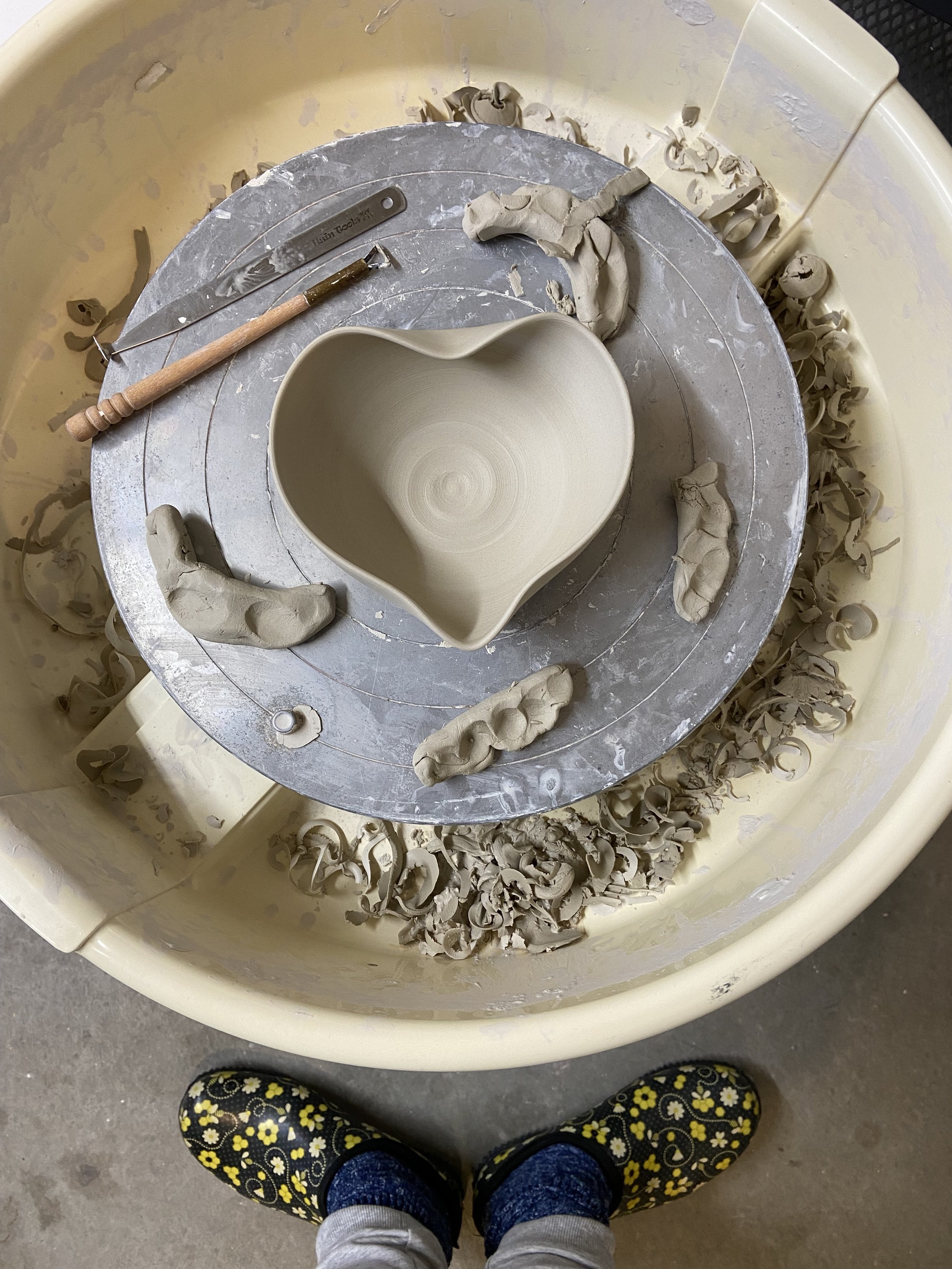I’m often asked how long it takes to make a piece of pottery. That is difficult to answer, but here is my best description. Some potters use molds or machines to help create their pieces, which takes additional time and skill, but I don’t use either, so this is the process I follow.
Turning a lump of clay into the initial form, whether thrown on the wheel or building by slab, can take only moments, but after that, it’s about timing. Once the clay is formed, it needs to dry to a point that will allow handling and altering without collapsing or deforming—at this point, the pot is called leatherhard. Once at the leatherhard stage, a foot can be trimmed, handles can be added, and carving or other decorating techniques can be applied. Depending on how many pots there are, this step can take days. Now that the pots are in their final formed stage they need to slowly dry, sometimes partially wrapped with plastic—so as not to warp or crack—until they are completely dry and that can take several days. At this point the clay is called bone dry and has no discernible moisture.
The next step is to fire the bone dry pots in the kiln and this first firing is called the bisque firing. The bisque firing will drive out the rest of the water that is still molecularly bound to the unfired clay, rendering the pots partially vitrified—partially because they will still need to absorb the glaze in the next step. The bisque firing can take 7-9 hours and sometimes more depending on the firing schedule and size of the kiln load, but then it takes another 12 or more hours for the kiln to cool down to the point that it can be opened. If the kiln is opened too soon, thermal shock can cause the pots to crack in the kiln.
Now that the bisque firing is finished, the pots can be decorated with glaze, which is a step that most potters either love or hate—it can be tedious, but it can also be fun. Once the pots are glazed, they go back into the kiln for the glaze firing which is basically the same as the bisque, but at a higher temperature and this renders the pots fully vitrified. Once out of this second two-day run in the kiln, the bottoms can be sanded so they are smooth to the touch and less likely to scratch a table.
This is only part of the process. The rest is running a studio, maintaining a website and social media, setting up for markets and shows, packing and shipping, coming up with new designs, keeping enough inventory, and having a life outside of ceramics.
It’s a long process and I love (almost) every minute of it!

